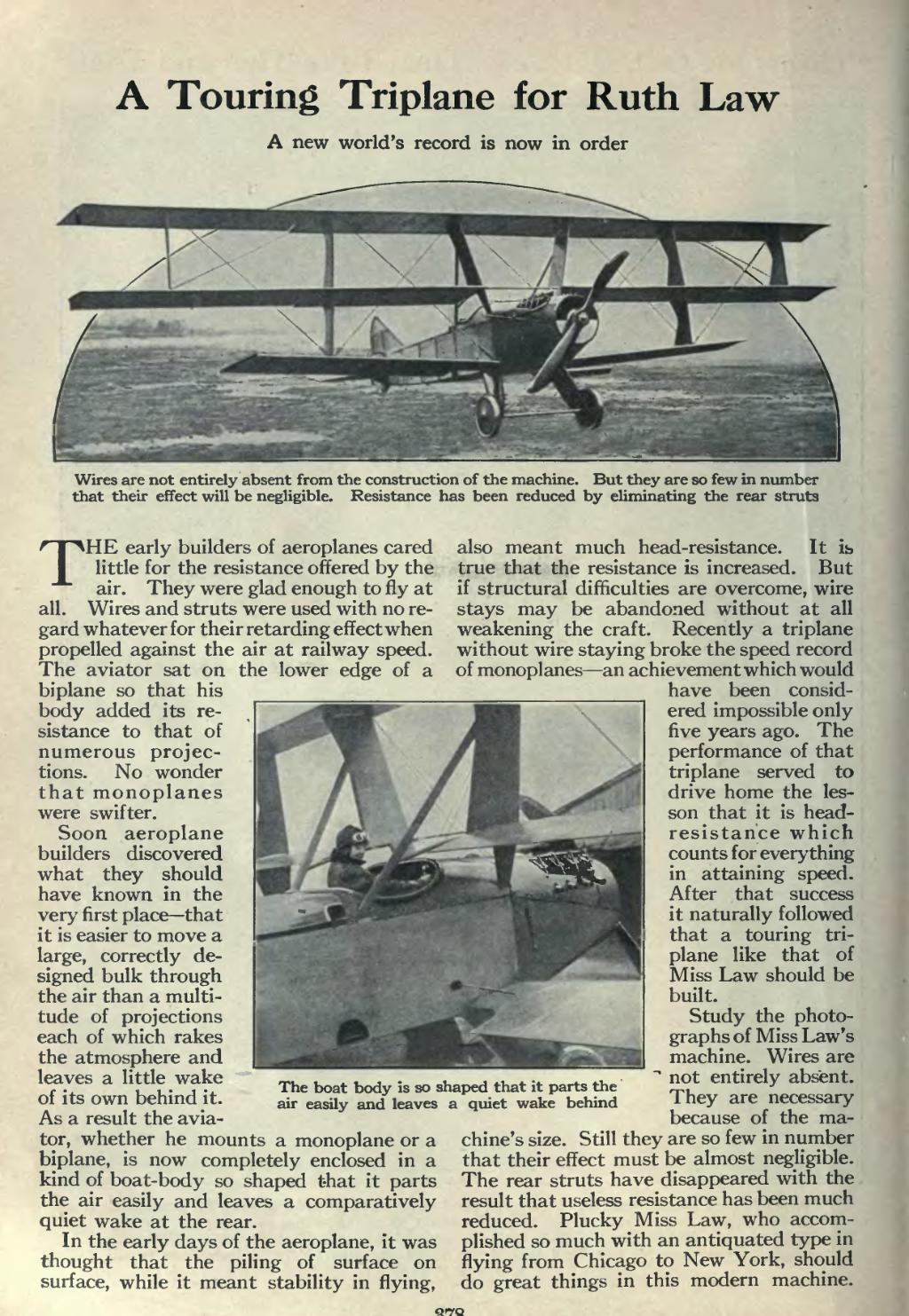A Touring Triplane for Ruth Law
A new world's record is now in order
���Wires are not entirely absent from the construction of the machine. But they are so few in number that their effect will be negligible. Resistance has been reduced by eliminating the rear strut3
��T
��HE early builders of aeroplanes cared
little for the resistance offered by the
They were glad enough to fly at
��air.
��all. Wires and struts were used with no re- gard whatever for their retarding effect when propelled against the air at railway speed. The aviator sat on the lower edge of a biplane so that his body added its re- sistance to that of numerous projec- tions. No wonder that monoplanes were swifter.
Soon aeroplane builders discovered what they should have known in the very first place— that it is easier to move a large, correctly de- signed bulk through the air than a multi- tude of projections each of which rakes the atmosphere and leaves a little wake of its own behind it. As a result the avia- tor, whether he mounts a monoplane or a biplane, is now completely enclosed in a kind of boat-body so shaped that it parts the air easily and leaves a comparatively quiet wake at the rear.
In the early days of the aeroplane, it was thought that the piling of surface on surface, while it meant stability in flying,
���The boat body is so shaped that it parts the air easily and leaves a quiet wake behind
��also meant much head-resistance. It is true that the resistance is increased. But if structural difficulties are overcome, wire stays may be abandoned without at all weakening the craft. Recently a triplane without wire staying broke the speed record of monoplanes — an achievement which would have been consid- ered impossible only five years ago. The performance of that triplane served to drive home the les- son that it is head- resistance which counts for everything in attaining speed. After that success it naturally followed that a touring tri- plane like that of Miss Law should be built.
Study the photo- graphs of Miss Law's machine. Wires are not entirely absent. They are necessary because of the ma- chine's size. Still they are so few in number that their effect must be almost negligible. The rear struts have disappeared with the result that useless resistance has been much reduced. Plucky Miss Law, who accom- plished so much with an antiquated type in flying from Chicago to New York, should do great things in this modern machine.
�� �
